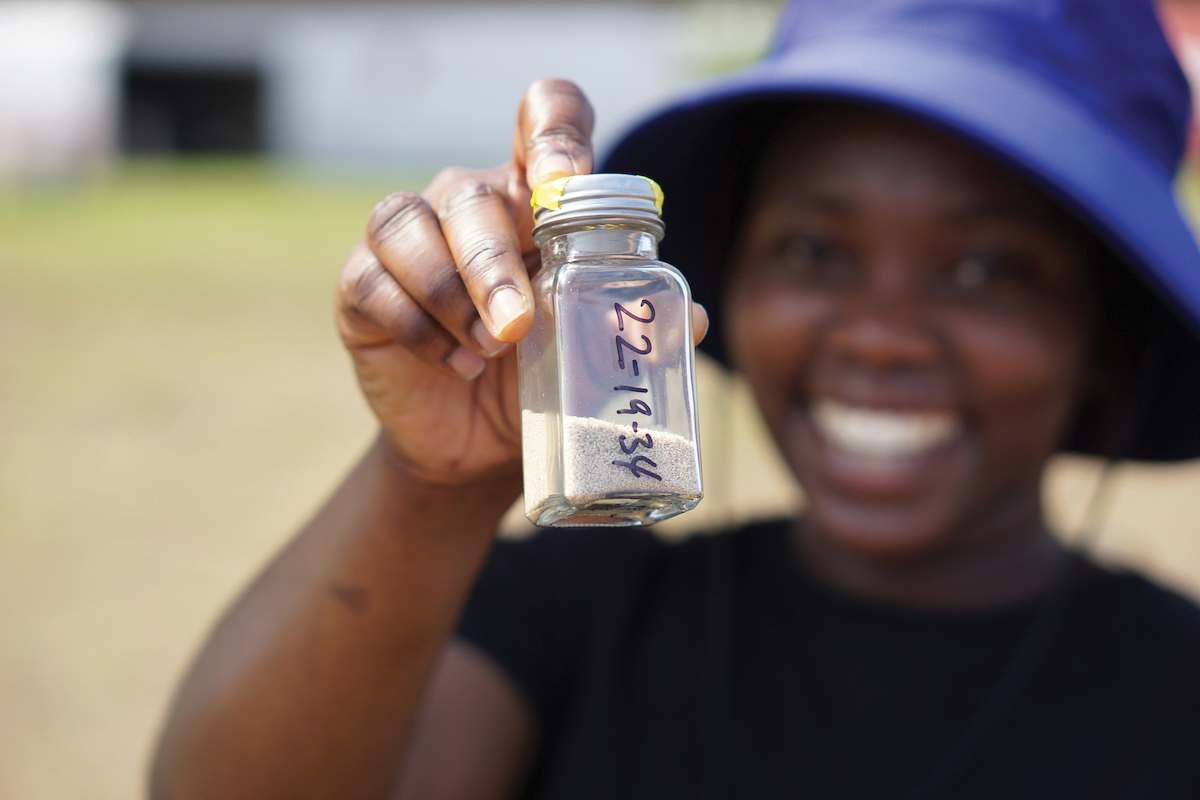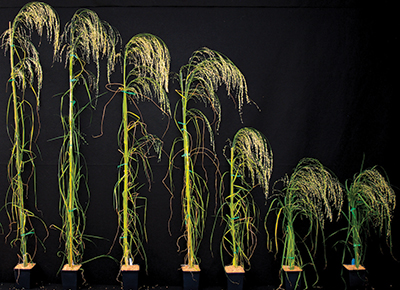Terrific Teff: Short Stature Could Yield Big for Ethiopia
Teff, a small grain indigenous to Ethiopia, serves as a dietary cornerstone for over 80 million people, providing up to two-thirds of the country's protein and dietary fiber. This ancient grain, renowned for its adaptability to diverse growing conditions and drought tolerance, is a promising candidate for a climate-resilient crop.
Notably, teff is gluten-free and rich in essential minerals such as iron, calcium, and magnesium. However, despite these inherent benefits, teff has not yet reaped the rewards of advanced breeding. The challenge lies in the tall growth of teff plants, which causes them to fall over, a phenomenon known as "lodging." Each year, farmers lose up to 25% of their teff harvest due to lodging, impacting both crop productivity and the livelihoods of subsistence farmers in the Horn of Africa.
But those losses may soon be a thing of the past thanks to the pioneering work of Getu Duguma, PhD, senior manager of regulatory science in the Danforth Center’s Institute for International Crop Improvement (IICI).
I grew up on a farm in Ethiopia, so I know first-hand that if we succeed, the benefits will be immense for our farmers.
Getu Duguma, PhD,
Senior Manager of Regulatory Science, Danforth Center Institute for International Crop Improvement
The First Hurdle
Dr. Duguma and his team are working to do for teff what the Green Revolution did for wheat and rice: creating semi-dwarf varieties to defeat lodging and increase yields. "I grew up on a farm in Ethiopia,” said Dr. Duguma, “So I know first-hand that if we succeed, the benefits will be immense for our farmers."
With the support of the Impact Fund, and working with the Danforth Center’s Plant Transformation Facility, Dr. Duguma was able to edit teff to produce a variety that was “28 – 42% shorter than the original and had lodging-resistant qualities.” The results were published in Plant Biotechnology Journal in 2022. This breakthrough, which shortens teff's height without compromising its nutritional value, has the potential to improve harvests by up to 20%.

Research Associate Kemi Olofintila showing the tiny seeds. Teff is small but mighty: it is gluten-free, drought-tolerant, and rich in protein and minerals.
Another Hurdle Cleared
Once the semi-dwarf variety was bred and trialed in the greenhouse, the next step in crop development is a field trial to see how the crop performs outdoors in nature. However, certain genome-edited crops require special USDA permissions. In April, the team received great news: a regulatory review determined that the semi-dwarf teff is not subject to biotechnology regulations.
“We are greatly encouraged by this USDA decision as it establishes an important precedent for future teff plant breeding innovations to tackle productivity constraints, such as pod shattering, small grain size, weed control, and climate change,” said Donald MacKenzie, PhD, executive director of IICI. “Our semi-dwarf teff lines will be undergoing field performance evaluation this year at the Danforth Center’s field research site.”
Data is currently being analyzed from the first season as part of this multi-year field trial. The Danforth Center teff project, and its USDA approval, were featured on a recent segment on PBS "Market to Market.” View the episode at MarkettoMarket.org.

Height comparison of edited and unedited teff plants. The Danforth Center’s Dr. Getu Duguma and team have developed a semidwarf variety that could improve yields up to 20%.
Important Partners
The new semi-dwarf teff was developed by Danforth Center researchers, who are collaborating with the Ethiopian Institute of Agricultural Research to improve teff productivity using new plant breeding techniques. The project has also received support from Corteva Agriscience.
You Can Help
Grants and collaborations do not cover all costs for robust programs to improve orphan crops. Dr. Duguma and team were able to gather the initial data on teff with help from donor support. Donations to the Danforth Center supply the Impact Fund with support for early-stage projects. To support this important work, please consider a gift today.
About
A version of this story originally appeared in the Leaflet, the free newsletter of the Donald Danforth Plant Science Center. Sign up to receive more stories like this straight to your inbox.